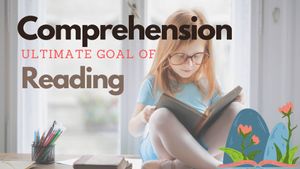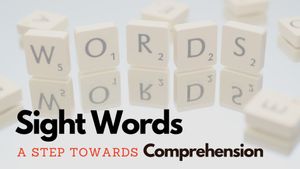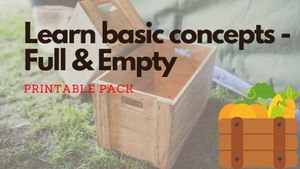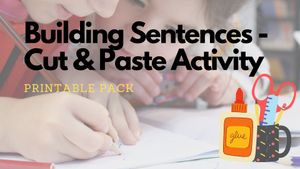Body balance. Body coordination. Body awareness. Simple phrases that we hardly attach much importance to while going on with our daily lives.
What is balance and coordination?
Balance is the ability to maintain a controlled body position during task performance, whether it is sitting at a table, walking the balance beam or stepping up onto a kerb. To function effectively across environments and tasks, we need the ability to maintain controlled positions during both static (still) and dynamic (moving) activities.
Static balance is the ability to hold a stationary position with control (e.g. “Freeze” or “statue” games). Dynamic balance is the ability to remain balanced while engaged in movement (e.g. running or bike riding).
Source: Balance & Coordination
I must confess that I never gave these any second thoughts because my older son met all his physical development milestones like walking, climbing, and running on time. In 2018, when his kindergarten teacher pointed out that while descending the stairs, he seemed unsure and wobbly, I laughed it off because he had never had an accidental fall or tumble from the stairs. But one day, while waiting to pick him up after school, I happened to see his class come down and what looked perfectly fine and inconsequential till that moment changed. I understood what she was trying to convey earlier.
Thanks to COVID, this summer went by without any swimming lessons, neither could I enroll him for a dance nor martial arts class. As per the advice of the occupational therapists, these are the best ways to improve body balance in a fun way. We are doing what we can at home and I’m sure his gym class at school is helping.
So, I decided to turn my focus to the toddler. Is he developing his body balance, control, and awareness in time? Crawling, cruising, walking, and running are the obvious ones, but I wanted to share a few ways we are working with him or rather making him work for a well-balanced future, no pun intended.
Crawling/ Walking on the plank
Ideally, we would require a little elevated platform and some mats underneath to create a safe plank/ platform for a toddler who is walking and is learning to run with a few tumbles. But, as an improvement, I let my son walk on the retaining walls bordering the pavements. I am always at arm’s length to break his slip or fall. The first time I dared to take him outdoors this summer, he started crawling on those tiny walls. But after a month, he could walk across without holding onto me for support. Earlier, I would discourage him to climb and walk anywhere but pavements, but now I see the advantage of the exercise under a strictly supervised setting. If you have kids play gym around, use it, if you don’t create one at home. Depending on their age and body balance, we have to keep raising the bar.
Bouncing/ Jumping off
Somewhere between 2 to 3 years of age, kids should figure out how to jump and land on their two feet and it requires well developed bilateral coordination. Instead of waiting for my toddler to reach the two-year milestone, we are encouraging him to jump on the trampoline. It has rails that he can hold onto and a net covering that keeps him safe from falling off. He loves bouncing and I am now noticing that he is trying to hop on his own, which as of now is a poor imitation of the ‘up and down’ movement, but he is trying.
If you don’t have a trampoline, the nearest and safest alternative would be the crib. Since it has raised rails all around, the toddler can bounce without any potential hazard. Of course, adult supervision is required.
Riding a balance bike
I know it might seem a little premature, but we have already bought a little balancing bike. And it is so small that he can ride it at home. It is a work in progress and he hasn’t figured it all out. But I am hopeful that before next summer, he would be able to use it the way it is meant to be used. Meanwhile, I am confident he is getting some exercise, developing his gross motor skills and we might even have a smooth transition to the usual pedal bike. Do watch the video as we could capture him gliding at the end of a day’s outing!
Descending/ Walking down the stairs
The little one is learning to descend the stairs at the playgrounds, whenever we happen to visit. I have also tried to take him up the stairs in our apartment building but found them to be too high and also risky given the ongoing pandemic. In winter, I plan to set up stools and tables on a thick rug/ floor mat to build a couple of steps for him to go up and down. The only concern is that I’ll have to make sure it is stable and doesn’t have sharp edges. Just into fall now, we still have a few cold but snow-free months ahead, do encourage your toddler to climb up and down a couple of steps in the playgrounds. Just remember that descending is harder than ascending.
Kicking and Throwing the ball
My toddler's first word was ‘car’ and the second was ‘ball’. He doesn’t get much practice outdoors, so we have bought a few light colorful balls that are safe for kicking and throwing indoors. Kicking is an extremely important milestone for physical and motor skill development. The toddler would need to have significant body control to be able to raise afoot to kick a ball. Usually, this happens after two years. But, using ‘kick’ and ‘throw’ prompts for early receptive language development, we have already started practicing with him. He is yet to successfully throw a ball but imitates the action of doing so.
There are many other fun activities that we can do to improve body balance and overall body control and coordination. But, I chose these five ones to ‘kick’ start the discussion. I am ‘throwing’ these ideas out to you. You can either ‘catch’ or ‘dodge’ them. Hoping you will ‘ride’ along and help your kids to ‘walk’ the walk.







